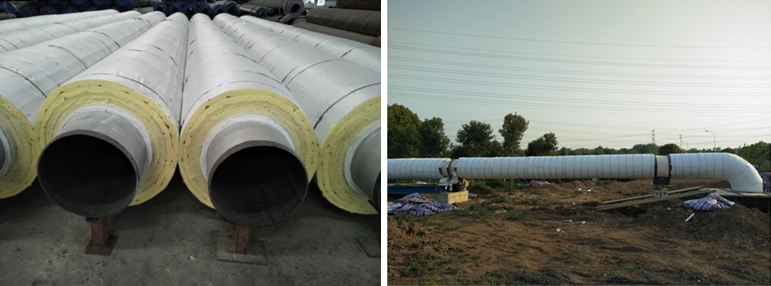Power Plant and Heating Network
City Heating Network
Centralized heat supply refers to the way in which steam and hot water produced by a centralized heat source are supplied to a city (town) or a part of a region through a pipeline network to provide the heat required for production, heating and living. Steam, hot water through the heat pipe network to the user side of the process of heat loss, especially with the national energy-saving policies to promote the implementation of the implementation of small boilers are gradually removed, the heat pipeline gradually lengthened, how to minimize heat loss, to ensure that the heat pipeline network safe, stable and effective operation of the heat pipe network thermal insulation structure put forward very stringent requirements.
At present, traditional thermal insulation materials such as aluminum silicate, rock wool, etc. are mostly used, and the poor hydrophobicity of the thermal insulation structure leads to serious settlement phenomenon, large heat loss and serious temperature drop; high maintenance cost; bulky thermal insulation structure, high construction and handling costs.
Advantages
1. Low thermal conductivity, reduce the thickness of the insulation layer, reduce the diameter of the jacket steel pipe, significantly reduce heat loss; reduce the amount of excavation; conducive to urban design and planning;
2. Water-repellent rate of 99.0% or more, to avoid the phenomenon of settlement caused by water ingress into the insulation structure;
3. Excellent fireproof performance;
4. Strong compressive and tensile properties, stable thermal insulation structure;
5. Service life of up to 20 years;
6. Inorganic environmental protection, improve equipment safety;
7. Convenient construction and easy installation.

Solar thermal
Solar thermal power generation is an important aspect of solar thermal utilization, this technology is the use of collectors to the sun's radiant heat energy through the heating of the thermal storage medium (mainly salt and heat transfer oil), the concentration of heat to the water heated to produce steam, and then through the turbine, generator to generate electricity.
At present, the heat storage tanks / pipelines are mostly used for the traditional insulation materials, such as rock wool, aluminum silicate, etc., resulting in a greater loss of existing heat. The energy stored in solar thermal power generation is itself very precious, so it is especially important to reduce heat loss and improve the utilization rate of solar thermal energy.

Advantages
1. Effectively reduce the heat loss of pipeline, improve the utilization rate and conversion rate of solar thermal;
2. Inorganic material, stable structure, service life up to 20 years;
3. Low thermal conductivity, reducing the thickness of insulation layer;
4. Convenient construction, easy to cut.